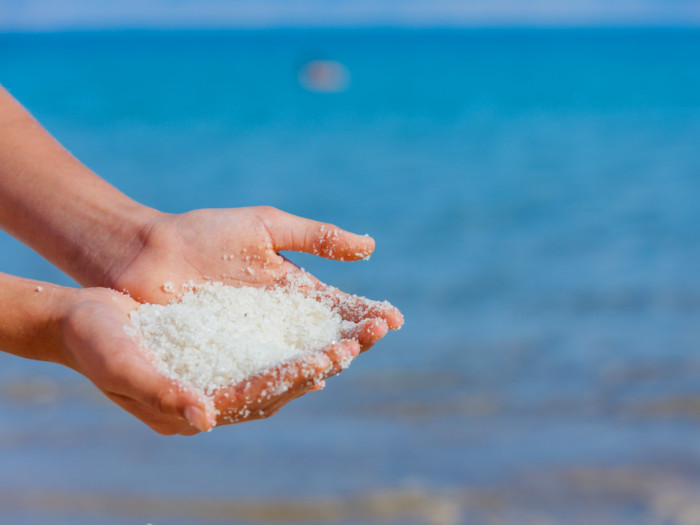The Dead Sea Salt Scrub can be a wonderfully therapeutic treatment for your skin and is known to have a variety of impressive health benefits.
What is Dead Sea Salt?
Dead Sea salt is the salt that is extracted from the Dead Sea, a large hypersaline body of water in the Middle East, bordered by Jordan, Israel, and Palestine. When it comes to salt content, the Dead Sea is roughly 9 times saltier than the ocean, to the point where it is extremely easy to float in these supposedly healing waters. This type of salt is not edible, as it is quite bitter and unpleasant to taste, but soaking in a bath with this Dead Sea variety of salt or having a Dead Sea salt scrub can have some major benefits. When taking a Dead Sea salt bath, it is best to empty two cups of this salt into a warm bath and then soak for at least 20 minutes. When it comes to piercings, some people soak an infected piercing in a mixture of this salt to prevent infection. [1]
Nutrition
The salt that is extracted from the Dead Sea is not only a rich source of salt but a rich source of other minerals and natural salts. Some of these key minerals include potassium, sodium, magnesium, and calcium, as well as chloride and bromide. [2]

Dead Sea salt is the salt and other mineral deposits extracted from the Dead Sea. Photo Credit: Shutterstock
Benefits
The major benefits of the Dead Sea salt scrub include its ability to cleanse and disinfect, promote youthful skin, soothe inflammation, and improve the health of the skin, among many others. [3]
- Hydrates the skin
- Cleanses and disinfects wounds, piercings, and infections
- Exfoliates the skin and clears the pores [4]
- Heals chronic skin conditions
- Reduces skin roughness
- Eliminates the appearance of fine lines and wrinkles
- Relieves symptoms of rheumatoid arthritis and osteoarthritis
- Lowers inflammation
- Relaxes sore muscles from injury or exercise
- Treats dandruff and itchiness on scalp
- Clears out acne symptoms by disinfecting sebaceous glands
- Reduces symptoms of eczema and rough patches of skin
- Whitens teeth when used as a tooth scrub (do not ingest) [5]
- Improves bad breath, when used in a gargle or mouthwash (do not ingest)
- Lowers puffiness of the skin around the eyes
- Minimizes cellulite appearance on the legs
- Improves blood circulation
- Reduces the appearance of stretch marks during and after pregnancy
- Strengthens nails and hair [6]
- Reduces large pores to improve skin health
- Treats psoriasis and seborrheic dermatitis
Epsom Salt vs Dead Sea Salt
There is some confusion about the difference between Epsom salt and Dead Sea salt, and there are some clear points that separate these two healthy substances.
- Composition: Epsom salt is composed of magnesium sulfate. Dead Sea salt is composed of a variety of minerals, as explained above.
- Benefits: Epsom salt is able to relieve muscle pain, tension, and inflammation. Dead Sea salt has many benefits that range from improving skin health to relieving symptoms of arthritis and other conditions. [7]
- Baths: Epsom salt baths can last for a shorter time, 10-12 minutes, whereas the Dead Sea salt baths can last for a longer period, at least 20 minutes.
- Intake: Epsom salt can be used internally in some cases, whereas Dead Sea salt should not be consumed.
Dead Sea Salt Uses
Apart from scrubbing, the other uses of Dead Sea salt include a soap, scrub, bath, lotion or shampoo. You can blend this salt into a variety of cosmetic products, particularly facial and hair scrubs, both for its exfoliating and anti-inflammatory properties. When preparing a bath, however, it is important to follow some key instructions.
- Step 1: Run a bath of warm water
- Step 2: Pour 2 cups of Dead Sea salt into the warm water
- Step 3: Soak in the bath for 20 minutes (at least)
- Step 4: Gently wash and rinse yourself with non-abrasive soap and warm water
- Step 5: Pat yourself dry, rather than scrubbing dry with a towel
